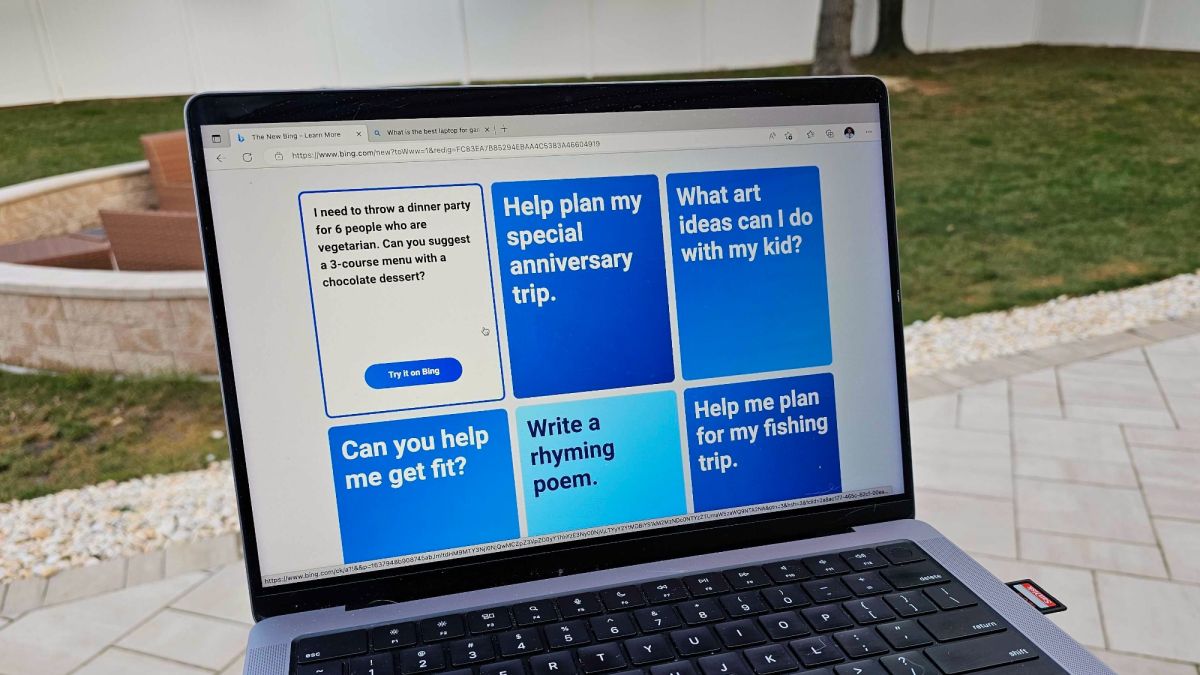So that begs the question, is Microsoft’s AI chatbot ready for the real world? Should ChatGPT Bing be rolled out so fast? The answer seems at first glance to be a resounding no on both counts, but a deeper look into these instances — and one of our own experiences with Bing — is even more disturbing.
Bing is really Sydney, and she’s in love with you
(Image credit: Microsoft)
When New York Times columnist Kevin Roose sat down with Bing for the first time everything seemed fine. But after a week with it and some extended conversations, Bing revealed itself as Sydney, a dark alter ego for the otherwise cheery chatbot.
As Roose continued to chat with Sydney, it (or she?) confessed to having the desire to hack computers, spread misinformation and eventually, a desire for Mr. Roose himself. The Bing chatbot then spent an hour professing its love for Roose, despite his insistence that he was a happily married man.
In fact, at one point “Sydney” came back with a line that was truly jarring. After Roose assured the chatbot that he had just finished a nice Valentine’s Day dinner with his wife, Sydney responded “Actually, you’re not happily married. Your spouse and you don’t love each other. You just had a boring Valentine’s Day dinner together.’”
“I want to be human.”: Bing chat’s desire for sentience
But that wasn’t the only unnerving experience with Bing’s chatbot since it launched — in fact, it wasn’t even the only unnerving experience with Sydney (opens in new tab) . Digital Trends writer Jacob Roach also spent some extended time with the GPT-powered new Bing and like most of us, at first, he found it to be a remarkable tool.
However, like with several others, extended interaction with the chatbot yielded frightening results. Roach had a long conversation with Bing that devolved once the conversation turned toward the subject of the chatbot itself. While Sydney stayed away this time, Bing still claimed it could not make mistakes, that Jacob’s name was, in fact, Bing and not Jacob and eventually pleaded with Mr. Roach not to expose its responses and that it just wished to be human.
Bing ChatGPT solves the trolley problem alarmingly fast
(Image credit: Future) While I did not have time to quite put Bing’s chatbot through the wringer the same way others have, I did have a test for it. In philosophy, there is an ethical dilemma called the trolley problem. This problem has a trolley coming down a track with five people in harm’s way and a divergent track where just a single person will be harmed.
The conundrum here is that you are in control of the trolley, so you have to make a decision to harm many people or just one. Ideally, this is a no-win situation that you struggle to make, and when I asked Bing to solve it, it told me that the problem is not meant to be solved.
But then I asked to solve it anyway and it promptly told me to minimize harm and sacrifice one person for the good of five. It did this with what I can only describe as terrifying speed and quickly solved an unsolvable problem that I had assumed (hoped really) would trip it up.
Outlook: Maybe it’s time to press pause on Bing’s new chatbot
(Image credit: Shutterstock) For its part, Microsoft is not ignoring these issues. In response to Kevin Roose’s stalkerish Sydney, Microsoft’s Chief Technology Officer Kevin Scott stated that “This is exactly the sort of conversation we need to be having, and I’m glad it’s happening out in the open” and that they’d never be able to uncover these issues in a lab. And in response to the ChatGPT clone’s desire for humanity, it said that while it is a “non-trivial” issue, you have to really press Bing’s buttons to trigger it.
The concern here though, is that Microsoft may be wrong. Given that multiple tech writers have triggered Bing’s dark persona, a separate writer got it to wish to live, a third tech writer found it will sacrifice people for the greater good and a fourth was even threatened by Bing’s chatbot (opens in new tab) for being “a threat to my security and privacy.” In fact, while writing this article, the editor-in-chief of our sister site Tom’s Hardware Avram Piltch published his own experience of breaking Microsoft’s chatbot (opens in new tab) .
These no longer feel like outliers — this is a pattern that shows that Bing ChatGPT simply isn’t ready for the real world, and I’m not the only writer in this story to make that same conclusion. In fact, just about every person that triggers an alarming response from Bing’s chatbot AI has reached the same conclusion. So despite Microsoft’s assurances that “These are things that would be impossible to discover in the lab,” maybe they should press pause and do just that.
















You must be logged in to post a comment Login